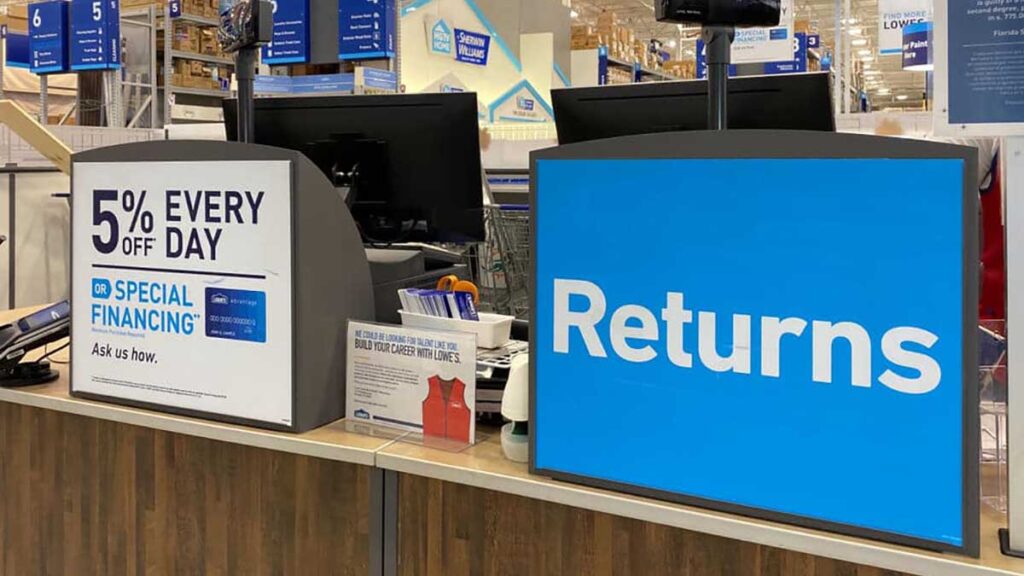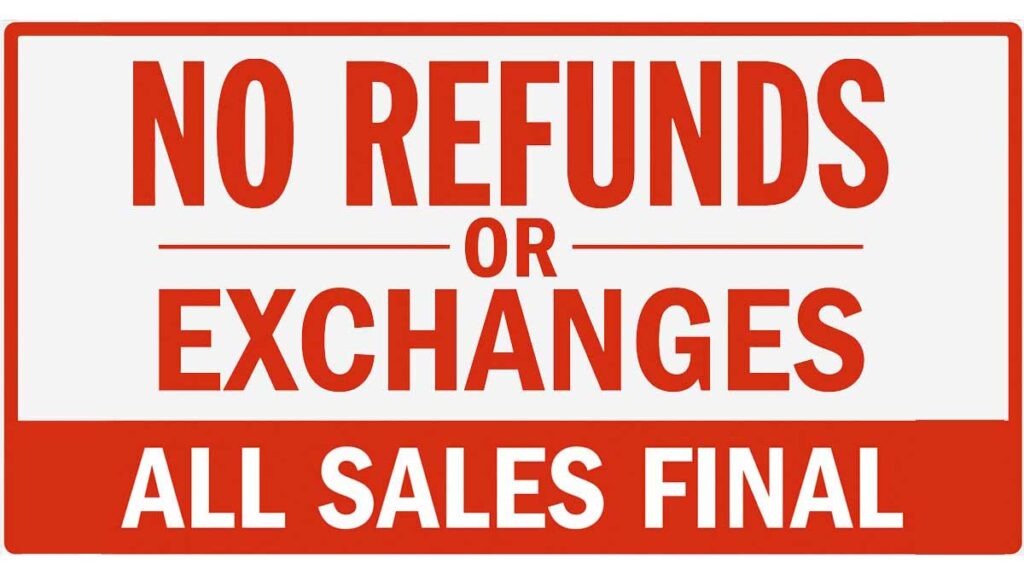Are you tired of feeling stressed and confused when it comes to exchanging products? Look no further! “The Ultimate Guide To Exchange Policies” is here to help you navigate the world of return and exchange policies with ease.
This comprehensive guide offers valuable insights and practical tips, ensuring that you make informed decisions and enjoy a hassle-free shopping experience. From understanding different store policies to knowing your rights as a consumer, this article has got you covered. Say goodbye to frustration and hello to convenience as you master the art of product exchanges.
Understanding Exchange Policies
What are exchange policies?
Exchange policies are guidelines and rules set by retailers to provide customers with the option to return or exchange a product they have purchased. These policies outline the terms and conditions under which a customer can request an exchange, ensuring a smooth and satisfactory experience for both the buyer and the seller.
Why are exchange policies important?
Exchange policies are essential for both retailers and customers. For retailers, having a clear exchange policy helps establish trust and build a positive reputation with their customers. It also provides a framework for handling returns and exchanges in a fair and consistent manner. For customers, exchange policies give them peace of mind knowing they have the option to return or exchange a product if it does not meet their expectations or needs.
How do exchange policies work?
Exchange policies typically specify the timeframe within which a customer can request a return or exchange, the condition in which the product should be returned, and any additional requirements or procedures that need to be followed. These policies may also outline any exclusions or restrictions, such as certain types of products that cannot be exchanged. By adhering to the exchange policy, both the retailer and the customer can ensure a smooth and efficient exchange process.
Types of Exchange Policies
Return-only policy
A return-only policy allows customers to return a purchased product and receive a refund. This type of policy is commonly used by retailers who do not offer direct exchanges or have limited stock availability. With a return-only policy, customers are refunded the purchase amount, typically in the same form of payment used during the original transaction.
Exchange-only policy
In contrast to a return-only policy, an exchange-only policy allows customers to exchange the product for a different item or variant of the same product. This type of policy is often employed by retailers who want to ensure that customers leave with a product they are satisfied with, without offering refunds. With an exchange-only policy, customers can select an alternative product of equal or lesser value.
Return and exchange policy
Some retailers offer a comprehensive return and exchange policy that gives customers the flexibility to either return the product for a refund or exchange it for a different item. This type of policy aims to accommodate different customer preferences and needs. A return and exchange policy provides customers with the option to choose what best suits their circumstances.
Factors to Consider Before Exchanging a Product
Condition of the product
Before requesting an exchange, it is important to consider the condition of the product. Most retailers require the product to be returned in its original condition, with all packaging, tags, and accessories intact. If the product has been used, damaged, or altered, the retailer may refuse to accept the exchange request or offer a partial refund.
Timeframe for exchange
Each retailer’s exchange policy specifies a timeframe within which the product can be exchanged. It is crucial to be aware of this timeframe and initiate the exchange request within it. Failing to do so may result in the retailer rejecting the request. Timely action ensures a smoother exchange process and increases the likelihood of receiving the desired item in a timely manner.
Proof of purchase
Retailers often require proof of purchase, such as a receipt or order confirmation, to initiate an exchange. This proof ensures that the product was indeed purchased from their store and helps prevent fraudulent exchange requests. It is important to keep the proof of purchase handy when contacting the retailer for an exchange.

How to Initiate a Product Exchange
Contacting the retailer
The first step in initiating a product exchange is to contact the retailer from whom the product was purchased. This can typically be done by phone, email, or through an online customer service portal. It is important to have the necessary information, such as the order number or receipt, readily available when contacting the retailer to expedite the process.
Providing necessary information
When contacting the retailer, be prepared to provide all the relevant information they may ask for. This includes details such as the product name, purchase date, reason for exchange, and any additional information specific to the retailer’s exchange procedure. Providing accurate and complete information helps the retailer assist you more effectively and efficiently.
Following the exchange procedure
Each retailer may have a specific exchange procedure outlined in their exchange policy. It is crucial to follow this procedure carefully to ensure a smooth exchange process. This may include instructions on packaging the product, addressing the return shipment, or any additional forms or documentation that need to be included. Adhering to these instructions helps avoid any delays or complications during the exchange.
Understanding Return and Exchange Procedures
Return authorization
Some retailers may require customers to obtain a return authorization before initiating the exchange process. This authorization serves as a confirmation that the retailer accepts the return or exchange request. It is important to check the retailer’s exchange policy to determine if return authorization is required and, if so, to follow the necessary steps to obtain it.
Packaging requirements
Retailers often specify packaging requirements for returned products to ensure they are protected during transit. This may include using the original packaging, including any additional packaging materials provided by the retailer, and ensuring that the product is securely packaged to prevent damage. Following these packaging requirements helps ensure that the product arrives at the retailer in the desired condition.
Return shipping options
Depending on the retailer’s exchange policy, customers may have different return shipping options available to them. Some retailers provide prepaid return shipping labels, while others may require customers to arrange and pay for the return shipping themselves. It is important to review the retailer’s exchange policy to understand the available options and any associated costs.
Exclusions from Exchange Policies
Final sale items
Certain items may be labeled as “final sale” or “non-refundable” in the retailer’s exchange policy. These items are typically excluded from the exchange policy and cannot be returned or exchanged. It is important to review the product details and the retailer’s policy to identify any items that may fall under this category before making a purchase.
Intimate apparel
Due to hygiene reasons, many retailers do not accept exchanges or returns on intimate apparel such as underwear, swimwear, and lingerie. This exclusion is common in exchange policies and helps ensure the health and safety of customers. Be mindful of this exclusion when purchasing intimate apparel and carefully consider the size, fit, and style before making a final decision.
Personalized or customized products
Products that have been personalized or customized may not be eligible for exchange or return unless they are defective or damaged upon receipt. This is because personalized or customized items are often specifically made for the customer and cannot be resold. It is important to review the retailer’s exchange policy for any restrictions related to personalized or customized products.
Exchange Policy for Online Purchases
Return window for online purchases
For online purchases, retailers typically provide a specific timeframe within which the product can be returned or exchanged. This return window may vary depending on the retailer and the product category. It is important to be aware of this timeframe and initiate the exchange request within it to ensure eligibility.
Guidelines for returning items
When returning items purchased online, it is important to follow the guidelines provided by the retailer. These guidelines may include instructions for repackaging the product, including any necessary forms or documentation, and addressing the return shipment. Adhering to these guidelines helps ensure a successful return process and faster resolution.
Shipping costs and refunds
In many cases, customers are responsible for covering the shipping costs for returning the product when making an online purchase. Retailers may provide prepaid return shipping labels, deduct return shipping costs from the refund amount, or require customers to arrange and pay for the return shipment themselves. It is important to review the retailer’s exchange policy to understand the shipping costs and any associated refunds.
Exchange Policy for In-store Purchases
Return window for in-store purchases
For purchases made in-store, retailers typically provide a specific timeframe within which the product can be returned or exchanged. This return window may vary depending on the retailer and the product category. It is important to be aware of this timeframe and initiate the exchange request within it to ensure eligibility.
Requirements for in-store exchanges
When exchanging a product in-store, certain requirements may need to be met. These requirements may include presenting the original receipt, returning the product in its original condition with all packaging and accessories, and adhering to any additional instructions provided by the retailer. Meeting these requirements helps ensure a smooth exchange process and increases the chances of a successful exchange.
Additional considerations for in-store exchanges
In-store exchanges offer the advantage of immediate product availability, allowing customers to select a replacement item on the spot. However, it is important to check the retailer’s exchange policy for any limitations or exclusions specific to in-store exchanges. This may include restrictions on certain product categories or requirements for exchanging sale items.
Common Exchange Policy FAQs
Can I exchange a product without a receipt?
In most cases, retailers require a proof of purchase, such as a receipt, to process an exchange. Without a receipt, it may be challenging to initiate an exchange request. However, some retailers have systems in place to track purchases made without a receipt and may still be able to assist you. It is recommended to contact the retailer directly to inquire about their specific policy regarding exchanges without a receipt.
What if the product is damaged during shipping?
If a product arrives damaged due to shipping, it is important to notify the retailer as soon as possible. Most retailers will have a process in place to handle such incidents and may offer a replacement or refund. It may be necessary to provide photographic evidence of the damage and to follow any specific instructions provided by the retailer.
Can I exchange a product after the return window has expired?
Once the return window specified by the retailer has expired, it may be more challenging to request an exchange. However, some retailers may offer flexibility on a case-by-case basis, especially if the product is defective or damaged. It is recommended to contact the retailer directly and explain the situation to see if they are willing to accommodate your request.
Tips for a Smooth Exchange Experience
Keep product packaging and tags intact
Preserving the original packaging, tags, and accessories of the product can greatly facilitate the exchange process. Retailers often require the product to be returned in its original condition, and having all the associated materials readily available ensures a seamless and efficient exchange.
Read the exchange policy before making a purchase
Before making a purchase, take the time to read and understand the retailer’s exchange policy. Each retailer may have specific terms and conditions that apply to their products, and being aware of these policies can help you make an informed decision and avoid any potential surprises during the exchange process.
Document the condition of the product
Before initiating an exchange, it is helpful to document the condition of the product. This can be done by taking photographs or noting any defects or damages present. In the event of a dispute or misunderstanding, you can use this documentation as evidence to support your exchange request.
By understanding exchange policies, knowing the types of policies available, considering important factors, and following the proper procedures, you can navigate the exchange process with confidence and ensure a positive experience. Whether making a purchase online or in-store, being aware of the specific policy for each retailer can help you make an informed decision and maximize your chances of a successful exchange. Remember to keep your proof of purchase, adhere to any packaging requirements, and communicate with the retailer promptly to resolve any issues or concerns. With these tips, you can enjoy the flexibility and convenience of exchange policies while enjoying your shopping experience.




